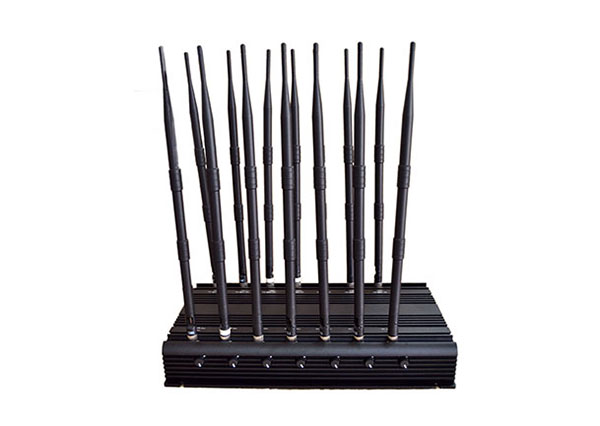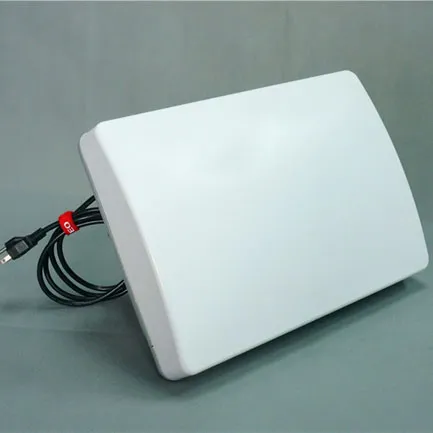2024年12月31日
Employing Drone Jamming Technology
What are drone jammers?
A drone is an advanced unmanned aerial vehicle that can be operated from a distance using a specific remote control. This technology is distinguished by its high efficiency and reliability, allowing users to fulfill their objectives at a lower cost. However, a significant number of drone owners are concerned about the risk of their devices being compromised. Such incidents could cause damage and necessitate the purchase of a new drone, leading to extra expenses. To achieve your aims while mitigating risks, it is vital to be informed about the function of a drone jammer.
The continuous evolution of modern tracking technologies has facilitated the easy determination of individuals' locations and activities. Tracking devices, including drones, are actively employed for surveillance rather than solely for entertainment. This has led users to seek ways to shield themselves from negative external influences, enhance their security measures, and secure high-quality services at the most affordable rates.
To avoid being monitored by your neighbors, you can take several proactive measures. It is important to follow specific rules and details in this regard. However, attempting to block a drone's signal without proper understanding may lead to complications. A drone jammer is a modern apparatus intended to interfere with drone operations, thus decreasing the likelihood of being tracked. The device operates on a relatively simple principle, yet it is remarkably effective, providing significant advantages at a minimal investment.
Signal jammers are effective against drones
Signal jammers serve the primary function of blocking unwanted signals, which helps to lower the chances of being tracked by third parties. Mobile jammers are the most commonly used, yet there is a rising trend in the use of different types of devices.
The device creates interference with radio reception, thereby preventing the target device from successfully sending a request to the base station. While the phone may believe it has transmitted a signal, it does not receive any response due to the base station being overwhelmed by other signals. This situation produces a continuous white noise that cannot be avoided.
Blockers are designed to operate at specific frequencies, allowing them to inhibit signals within a certain range and radius. The interference caused by colliding signals leads to their cancellation. As a result, devices like your phone will fail to receive signals from the base station. This technology is similarly utilized to disrupt drone communications. The jammer operates by blocking the signal pathway that transmits data from the drone to its control panel.
Signal blockers thoroughly interfere with the signal, hindering the drone's ability to gather location information. As a result, the drone may become immobile, increasing the risk of a crash.
The diminutive nature of drones often renders them undetectable, which means that anyone could potentially follow your location without your knowledge. You may not perceive the drone or the images and videos it collects, leading to possible infringements on your privacy.

2024年12月30日
Counter-Drone Technologies Designed for Operators of Unmanned Aerial Vehicles
A drone jammer (also known as a drone jammer gun) is a device used to bring drones to the ground.
It operates by disrupting the radio signals that govern drone operations, effectively grounding them by obstructing their communication networks.
The drone sector is presently undergoing remarkable expansion, with no indications of a deceleration in sight.
The growing prevalence of drones in the sky presents a significant challenge: how to effectively prevent these devices from entering no-fly zones.
The Federal Aviation Administration has been diligently striving to facilitate the adaptation of drone operators and the general populace to the current phase of evolution we are undergoing.
Nevertheless, in spite of significant efforts, the integration of drones into commercial airspace has encountered numerous challenges, with incidents involving drones occurring with increasing regularity at sporting events, airports, and various other locations.
How do drone jammers work?
Drone jammers function by emitting electromagnetic interference at specific radio frequencies, aiming to disrupt the radio and GPS signals utilized by drones during their operation.
The operational frequencies of drone jammers are typically designated as 2.4 GHz or 5.8 GHz. These frequencies are considered public and are not assigned to manned aircraft, public broadcasting, or cellular communication.
Drone jammers generally resemble firearms and function by emitting a jamming signal within a cone that spans approximately 15 to 30 degrees.
When a drone encounters interference from a jamming signal, it typically responds by returning to its original launch point, provided that the GPS signal remains unaffected. This behavior allows the operator of the jammer to monitor the drone's trajectory and potentially identify the pilot's location. In certain instances, a drone jammer may compel the drone to land at the site, facilitating a forensic examination.
The most advanced drone jammers available can operate over a distance of nearly one mile, with their efficiency improving as the pilot's remote control is positioned further from the drone.
Following events like the 2015 drone crash on the White House lawn, federal agencies have markedly enhanced their deployment of drone jammers to safeguard vital infrastructure and the residences of high-ranking government officials, including the White House.
Major events that attract significant audiences and receive extensive media attention, such as the Olympics or the Super Bowl, frequently employ drone jammers to mitigate unauthorized drone operations that could interfere with the event or jeopardize security. For instance, at the Super Bowl held at Mercedes-Benz Stadium in Atlanta, drone jammers were integrated into a thorough security plan that encompassed performance choreography and surveillance measures.
Checklist for choosing a quality drone jammer:
Ensure that the jammer is capable of covering the necessary distance to adequately safeguard the specified airspace.
The system must be user-friendly and necessitate only a limited amount of training for effective operation.
Seek a jammer capable of disrupting a broad spectrum of frequencies to accommodate various drone models.
Evaluate your requirements to determine if a portable device for field operations is necessary, or if a fixed device for permanent installation would be more suitable.
Choose a device that demonstrates durability and reliability across diverse environmental conditions.

2024年12月28日
Gsm Jammers for Vehicles
The introduction of GSM jammers for vehicles responds to the increasing necessity for privacy and security. These devices are specifically engineered to interfere with GSM signals, offering diverse applications such as minimizing distractions for drivers and bolstering safety during the transportation of sensitive items.
What are GSM Jammers for Vehicles?
A GSM Jammer for Vehicles functions as a device that disrupts GSM (Global System for Mobile Communications) signals. GSM is a standard that defines the second generation (2G) digital cellular network protocol employed by mobile phones. By blocking these signals, the jammer effectively prevents all GSM devices within its vicinity from engaging in calls, sending text messages, or utilizing data services.
How do GSM Jammers for Vehicles Work?
A GSM jammers for Vehicles functions on a relatively uncomplicated principle: it broadcasts radio frequencies akin to those employed by mobile phones, but with greater power. This produces "noise" that effectively masks the genuine signal from the cell tower. The jammer is specifically calibrated to the GSM operating band, which inhibits any communication between the phone and its cellular network.
In particular delicate situations, individuals may resort to using a GSM jammer to maintain their privacy or to prevent tracking through their mobile devices. Furthermore, certain commercial fleet operators implement vehicle gps blocker for car to keep drivers focused on the road, thereby reducing the likelihood of distractions from phone calls or text messages. In critical safety scenarios, such as the movement of VIPs or valuable assets, GSM jammers can be utilized to obstruct the remote triggering of explosive devices that are activated by cell phones.
Choosing the Right In-Vehicle GSM Jammer
When choosing an in-vehicle GSM jammer, consider the following factors:
- Coverage: Make sure the jammer covers the range you need and does not exceed that range to avoid causing unnecessary interference to other devices.
- Frequency Range: Choose a jammer that can block specific frequencies used by the devices you want to disrupt.
- Power Consumption: Consider how the jammer will affect your vehicle's battery life and ensure it does not consume excessive amounts of power.
Although the primary function of an in-vehicle GSM jammer is to bolster privacy or security, it is crucial to evaluate its possible repercussions on safety. A jammer, for instance, might interfere with communication during critical situations, thereby jeopardizing lives. It is imperative for users to understand these implications and devise strategies to alleviate any negative outcomes.

2024年12月27日
The Immediate Demand for an Effective National System to Detect Gps Jamming
GPS threats are increasing at a record rate
The escalation of conflicts worldwide is negatively impacting the reliability of GPS technology, with a notable increase in interference attacks disrupting large areas in Europe and the Middle East, resulting in serious inconveniences for civilians. Simultaneously, there is a rising trend of criminal elements employing jammers for drug trafficking, cargo theft, and various other illegal activities in North America. Recent years have seen sporadic GPS jamming and spoofing incidents that have affected major airports across the United States. Additionally, many American citizens are now purchasing affordable retail jammers, motivated by privacy concerns and the spread of anti-government conspiracy theories.
For years, security analysts have been alerting stakeholders to the dangers posed by targeted attacks on GPS, which could lead to disruptions in the financial system, power grid, air traffic management, and emergency response services. While there is a rising consensus on the necessity of developing alternative capabilities for GPS, it is imperative to also consider another vital issue that warrants focus.
There is an urgent necessity for America to establish an automated national detection system that can detect GPS interference instantaneously and generate accurate real-time maps showing the areas affected.
A critical weakness in our satellite navigation capabilities is the lack of a coordinated, real-time system for detecting high-precision jamming and spoofing, which exposes American government, commercial, and emergency operations to vulnerabilities within the nation.
Tracking emitters
Determining the exact source of an interference attack, namely the emitter, is vital for executing prompt and efficient countermeasures, such as disabling the jammer to restore navigation capabilities.
Locating the emitter facilitates the identification of the specific area where interference is taking place, indicating where the effects are likely to be most pronounced and which assets are at the highest risk.
Nonetheless, accurately identifying emitters using standard ground-based sensors presents significant difficulties. One primary obstacle is that mobile jammers often emit low-power signals, which are harder to detect from a distance and can reflect off surfaces like buildings, cars, and trees. Furthermore, the mobility of jammers, which frequently change their locations, adds another layer of complexity to tracking them. Moreover, sophisticated jammers may implement detection countermeasures, including omnidirectional antennas and frequency hopping, which further impede triangulation.
Implementing a smartphone-based detection system would greatly augment the number of sensors available for tracking the emitter. A closely-knit array of detection points would enable quicker and more accurate detection, confirmation, and aggregation of information concerning signal location in real time, regardless of any changes in the emitter's position. It has been established that large-scale networks of mobile devices can effectively monitor the ionosphere in real time, enhancing positioning accuracy.


2024年12月26日
Jamming Drones at Airports
The most significant aspect of jamming is power. In straightforward terms, if the signals transmitted by the pilot and the GPS are strong enough for the drone to successfully demodulate and decode them, even in the presence of jamming noise, the jamming will not achieve its intended effect. Typically, any fixed omnidirectional or directional jammer would be installed on the airfield, whereas the illicit drone operator is expected to be positioned outside the boundaries of the airfield.
Within the confines of the airfield, the signal strength transmitted to the pilot will weaken as the distance from the drone increases. In contrast, the influence of the jamming signal on the drone will become more pronounced as it moves closer.
Therefore, theoretically, the success of jamming is influenced by the jammer's location in relation to the area it covers, assuming there is a clear line of sight. Nonetheless, as discussed earlier, any equipment operating on the four relevant frequencies will encounter interference.
Airports are often characterized by vast and sometimes irregularly configured boundaries. As a result, the deployment of fixed jammers, both omnidirectional and directional, may require the use of multiple devices to effectively cover the airport's territory. This is applicable to all solutions, given their specific range limitations; nonetheless, some systems may prove to be more effective by utilizing additional techniques. In particular, larger airports may necessitate the installation of more than one system to adequately protect the entire area.
Another possibility is to implement targeting jammers alongside fixed jammers to eliminate coverage deficiencies, or, as a standalone jamming method, to engage a qualified and authorized security or police quick reaction force (QRF).
The layout of an airport, characterized by its runways, taxiways, aprons, peritracks, and access roads, creates various difficulties. Considering the considerable power necessary to successfully jam a drone and the extensive area of the airport, it is probable that the security or police Quick Reaction Force will have to traverse the airport in order to position themselves for the uav jammer operation.
This complexity is heightened by the erratic flight path of the drone, which requires the jammer operator to direct and engage the jammer gps at the drone as it comes within range, regardless of its angle. Handheld targeting jammers differ from lasers in that they do not emit a focused beam; instead, they project a cone of radio frequency energy, typically spanning from about 40° to 90°, which may interfere with other devices located within that cone.

2024年12月25日
Important Insights on the Application of Mobile Cell Phone Jammers
Over the past several decades, the popularity of cell phones has consistently increased. According to a study, more than 380 million cell phones were in operation in the United States as of October 2020, with this number on an upward trajectory. The prevalence of cellular phone usage is equally notable throughout Europe.
The convenience of being able to communicate with anyone at any moment is something that many individuals tend to take for granted. However, there exists a less favorable side to mobile phones that many business owners have learned about through difficult experiences.
The Dark Side of Cell Phones
While mobile phones are invaluable tools for communication, their use can often be inappropriate in certain settings. Many individuals continue to engage with their devices in public spaces, including theaters, restaurants, concerts, funeral homes, and churches, without regard for the surrounding environment. This disregard can lead to social discomfort for others, particularly when there are explicit signs indicating that mobile phone use is prohibited.
Additionally, more malevolent uses encompass employing the cell phone as a detonating device, prompting the development of our IED jammer category to ensure protection and avert loss of life.
It is possible to swiftly and safely resolve these challenges by employing a cell phone jammer. Understanding the principles of signal jamming in relation to wireless devices will facilitate a deeper appreciation of their overall importance.
Basics Of The Cell Phone Blocker
The ability to effectively disrupt a cell phone signal is essentially comparable to jamming various types of mobile radio communications with a standard signal blocker. It is crucial to understand that a wireless device functions by communicating directly with its designated service network through a base station or tower, which divides cities into smaller areas known as cells.
As an individual using a mobile phone travels down the road, the signal is transferred between towers in a manner similar to a football being thrown. A cell phone blocker is capable of transmitting on the same radio frequencies that these wireless devices employ.
The 'white noise' phenomenon serves to disrupt the communication link between the base station located in the tower and the mobile handset. This disruption is technically identified as "denial-of-service." The cell phone jammer kit is specifically crafted to eliminate (deny) signals within the radio spectrum for handsets that are within the vicinity of the jamming device.
How Mobile Jammers Get the Job Done
The design of cell phone blockers focuses on overpowering mobile devices by broadcasting a standard signal at the same frequency as mentioned earlier. It is essential that this signal is transmitted with a significant amount of power, enabling the two signals to collide and entirely cancel each other, which leads to a disruption of services.
To put it plainly, the cell phone is misled into believing that service is unavailable in the area. As a result, when users try to operate their phones in a jamming zone, it appears that they are in a "dead zone" lacking service.
How Can This GSM Blockage Be Accomplished?
While different cellular systems are capable of processing a multitude of signals, they all fundamentally utilize basic radio signals that can be easily disrupted. The GSM, which serves as the backbone for digital cellular networks and those based on PCS, functions within the 900 MHz and 1800 MHz frequency bands in Asia and Europe, and the 1900 MHz band in North America.
The capabilities of scrambler devices enable them to broadcast a wide range of frequencies that can interfere with CDMA, AMPS, GSM, TDMA, DCS, PCS, Nextel, and iDEN systems. This includes both older analog mobile phones and modern digital devices, which are both at risk of being jammed.
What is the Average Effective Jamming Disruption Range?
This is primarily determined by the power of the unit, the local environment, and the signal strength. Furthermore, elements like walls in a building can have a minor impact on the signal being emitted by the signal disrupter.
Mobile blockers with lower power levels can halt all calls within a range of roughly 60 feet, whereas higher-powered devices can generate a "dead zone" that spans the area of a football field.
The Most Powerful Signal Jammer Devices on the Market
Please be aware that these advanced signal jamming units are employed by law enforcement and governmental agencies, which have access to devices that can create considerably larger dead zones. Some models used by the government can produce dead zones that reach far beyond a one-kilometer radius from the jamming source.
2024年12月24日
Non-Kinetic Jamming Drones
Non-Kinetic Soft-Kill Counter-UAV Techniques
Non-kinetic counter-UAV strategies function by interrupting or intercepting communication signals. Typically, these approaches lead to the drone plummeting to the ground at high speed, rendering them unsuitable for deployment in populated areas. Nevertheless, they may prove beneficial in alternative environments. When evaluating drone countermeasures, it is crucial to verify the legal framework in your country, as the use of drone jammers and spoofers is illegal in the United States. We will now examine several non-kinetic C-UAS techniques.
What are drone jammers?
The operation of jammers is based on the emission of electromagnetic noise across the radio frequencies that drones rely on for their functionality and data transmission. This noise effectively obscures the communication link between the drone and its controller. Typically, these frequencies are 2.4 GHz and 5.8 GHz, which are unallocated public frequencies. As a result, jammers are structured to avoid interference with manned aircraft, mobile phones, public broadcasts, or other specific radio bands.
Jammers can exist as either permanently affixed devices or as components of highly mobile, gun-shaped tools that facilitate the safe descent of a drone.
What happens when a drone gets jammed?
- Will the drone land, or
- Will the drone return to its location
What are the drawbacks of drone jamming?
As per the regulations set forth by the Federal Communications Commission (FCC), drone jammers are illegal within the United States.
Utilizing a 'cell phone jammer' or similar apparatus to deliberately block, disrupt, or interfere with authorized radio communications constitutes a violation of federal law. These devices, which include signal blockers, GPS jammers, and text blockers, can severely compromise critical public safety communications, thereby preventing individuals from accessing 9-1-1 and other emergency services. Furthermore, jammers may also interfere with communications essential for law enforcement operations.
Engaging in the operation of a jammer in the United States can incur considerable fines, the confiscation of prohibited equipment, and criminal penalties, potentially resulting in imprisonment.
Applicable Law
Communications Act of 1934
- Section 301 - Requires a person who operates or uses a radio transmitter to be licensed or authorized pursuant to the Commission's regulations (47 USC § 301)
- Section 333 - Prohibits intentional or malicious interference with the radio communications of any station licensed or authorized under the Act or operated by the United States Government (47 USC § 333)
2024年12月23日
Installing a Gps Signal Jammer in Your Car
Engaging with a mobile phone during driving can be perilous. Various research studies have indicated that the use of mobile phones by drivers is highly hazardous. The moment a driver interacts with a mobile device, their focus is unavoidably shifted away from the roadway. Furthermore, GPS signal jammers are susceptible to interference from electronic components, akin to the disruptions affecting mobile phone signals.
Why do you need a mobile phone signal jammer when driving?
GPS signal jammers function by disrupting signals within a designated range, leading to the disconnection of all communication devices present in that vicinity. The installation of a GPS blockers in a car enables owners to easily monitor their vehicles via GPS management platforms. Nonetheless, it is crucial to recognize that such advantageous products can be misused by criminals. Purchasing a GPS signal jammer online can result in a stolen vehicle becoming undetectable, as it will not transmit a signal and will appear offline on tracking services, making recovery efforts futile. This exemplifies one of the key capabilities of GPS signal jammers. Furthermore, these devices also serve the important role of blocking signals from hidden GPS trackers, thus protecting individual privacy.
The legal status of GPS signal jammers raises concerns, particularly as some criminals utilize these devices to commit automobile theft, resulting in various social challenges. For example, certain ultra-long standby GPS locators are programmed to communicate their location only once daily. After activation, they immediately send the vehicle's exact positioning data to the buyer's network platform before reverting to sleep mode. Without a signal, these locators remain undetectable to car thieves. Additionally, the installation of a wireless network is unnecessary, and the devices can be discreetly positioned anywhere on the vehicle, as long as they are not placed in areas that block signals. This ensures a high level of security for the project. It is essential to recognize that GPS signal jammers are primarily intended to disrupt hidden GPS tracking devices.
Are you experiencing a lack of privacy during high-level meetings within your organization? Do you wish to safeguard yourself from potential recordings by others in public spaces or at home? The optimal method to ensure your privacy is to employ a mobile phone signal jammer.

A mobile phone jammer kit functions by interfering with or blocking the signals of adjacent mobile phones, which inhibits their ability to send or receive information. However, it is essential to consider various elements when deciding on a mobile phone jammer.
The primary factor to consider is the pricing. The cost is contingent upon the level of advancement of the jammer you require and the extra features you wish to include. Generally, mobile phone jammers that solely block signals are less expensive than other types, including wireless and remote control jammers. It is also advisable to remember that a greater coverage area usually results in an increased price.
Alternatively, before deciding to buy a cell phone signal jammer, one must first ascertain the operating frequency of the device. In the United States and Canada, the applicable frequencies are 850MHz and 1900MHz. Consequently, it is important to be mindful of this information to prevent the purchase of an inappropriate cell phone signal jammer.
2024年12月20日
Used Block Data Mobile Signals Protect Teenagers Accessing Internet
A mobile signal jammer for a single-family home
Location: Leeds, West Yorkshire, UK
The jammer is used to block data and mobile signals to protect teenagers from accessing the internet via mobile data.
Ability to turn all networks off and on at certain times of the day and night.
The portable 10 antenna looks good, it runs for hours on the charger.
It's an old Victorian house so coverage is limited when running it,
Only covers my home, 40 meters from the center, depending on location and coverage,
Depending on its effectiveness, maybe I have to limit it to 30 meters to avoid affecting neighbors, so this jammer should be adjustable.
Recommended:

Recommended reasons:
Better shielding distance and more concealment
Ability to turn off and on all networks at specific times of the day and night.
Can use smart mini smart plugs to schedule on and off
The shielding radius of the device is about 5-10 meters, which will not cause much impact on others.
Or change it to a directional antenna, the direct direction will be shielded (such as facing the child's room), while the radial direction will not be shielded.
2024年12月19日
Jammers from China Flood Delhi Markets
New Delhi: Chinese mobile signal jammers have entered the local markets, breaching the directives set forth by the Cabinet Secretariat that prohibit the sale or use of these devices by individuals. Recently, police authorities seized an unauthorized jammer from Palika Market in Connaught Place.
Law enforcement is actively investigating the origins of these illegal jammers and is working to identify potential buyers, especially considering the recent bombings in Prashant Vihar, Rohini, and the associated terrorism threat. The police have reason to believe that a larger network may be involved in the importation of these mini gps jammer to disrupt communication channels. Notably, Palika Market and New Lajpat Rai Market are infamous for offering low-cost electronic products, including those that are pirated or counterfeit.
In response to elevated security concerns, the Connaught Place police conducted an operation on October 24, resulting in the arrest of a shopkeeper for unlawfully possessing a mobile signal jammer.
Ravi Shankar Mathur, a 58-year-old suspect, was apprehended while in possession of a gsm blocker produced in China, designed to interfere with mobile phone signals. The police uncovered this device, along with additional items such as ten antennas and an electrical connecting wire, at a shop located in Palika Bazar.
When asked, Mathur failed to present any documents, such as receipts or licenses, to verify his ownership of the jammer. He stated that he acquired the device from the New Rajpath Rai market for Rs 25,000, with plans to sell it for a higher price.
The seizure memorandum cataloged the items that were seized, including a silver-grey jammer of dimensions 30x13 cm featuring 10 antenna jacks that are compatible with various mobile technologies, as well as a manual that provided details on the device's functionalities and installation.
Notification has been issued to the Department of Telecommunications, indicating that further inquiries will be undertaken concerning Mathur, and that appropriate legal actions will be pursued against him.







